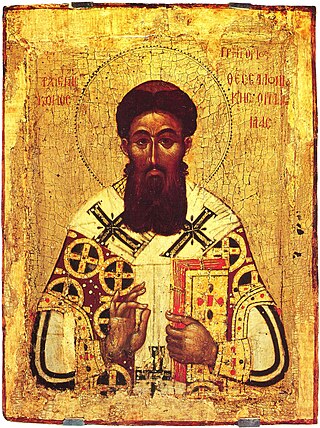
Hesychasm is a contemplative monastic tradition in the Eastern Christian traditions of the Eastern Catholic Church and Eastern Orthodox Church in which stillness (hēsychia) is sought through uninterrupted Jesus prayer. While rooted in early Christian monasticism, it took its definitive form in the 14th century at Mount Athos.
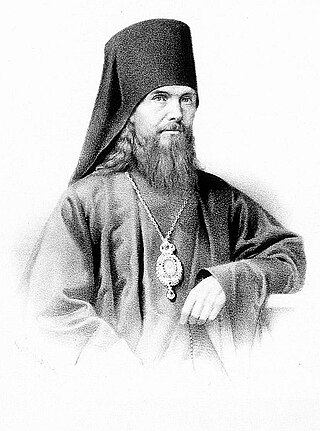
Theophan the Recluse, also known as Theophanes the Recluse or the Enlightener Theophan the Recluse of Vysha was a bishop of the Russian Orthodox Church and theologian, recognized as a saint in 1988.

The Jesus Prayer, also known as The Prayer, is a short formulaic prayer, esteemed and advocated especially in Eastern Christianity and Roman Catholicism:
Lord Jesus Christ, Son of God, have mercy on me, a sinner.
The Philokalia is "a collection of texts written between the 4th and 15th centuries by spiritual masters" of the mystical hesychast tradition of the Eastern Orthodox Church. They were originally written for the guidance and instruction of monks in "the practice of the contemplative life". The collection was compiled in the 18th century by Nicodemus the Hagiorite and Macarius of Corinth based on the codices 472, 605, 476, 628 and 629 from the library of the monastery of Vatopedi, Mount Athos.

Christian mysticism is the tradition of mystical practices and mystical theology within Christianity which "concerns the preparation [of the person] for, the consciousness of, and the effect of [...] a direct and transformative presence of God" or Divine love. Until the sixth century the practice of what is now called mysticism was referred to by the term contemplatio, c.q. theoria, from contemplatio, "looking at", "gazing at", "being aware of" God or the Divine. Christianity took up the use of both the Greek (theoria) and Latin terminology to describe various forms of prayer and the process of coming to know God.
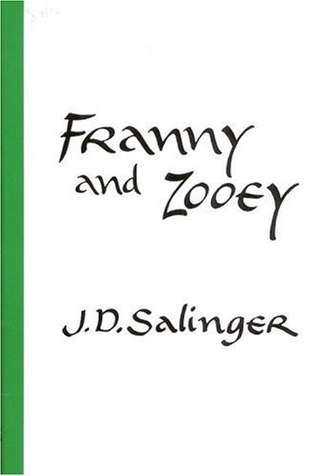
Franny and Zooey is a book by American author J. D. Salinger which comprises his short story "Franny" and novella Zooey. The two works were published together as a book in 1961, having originally appeared in The New Yorker in 1955 and 1957 respectively. The book focuses on siblings Franny and Zooey, the two youngest members of the Glass family, which was a frequent focus of Salinger's writings.

Kobayashi Issa was a Japanese poet and lay Buddhist priest of the Jōdo Shinshū. He is known for his haiku poems and journals. He is better known as simply Issa (一茶), a pen name meaning Cup-of-tea. He is regarded as one of the four haiku masters in Japan, along with Bashō, Buson and Shiki — "the Great Four."
The Glass family is a fictional family appearing in several of J. D. Salinger's short fictions. All but one of the Glass family stories were first published in The New Yorker. They appear in the short story collections Nine Stories, Raise High the Roof Beam, Carpenters and Seymour: An Introduction and Franny and Zooey.

The Desert Fathers were early Christian hermits and ascetics, who lived primarily in the Scetes desert of the Roman province of Egypt, beginning around the third century AD. The Apophthegmata Patrum is a collection of the wisdom of some of the early desert monks and nuns, in print as Sayings of the Desert Fathers. The first Desert Father was Paul of Thebes, and the most well known was Anthony the Great, who moved to the desert in AD 270–271 and became known as both the father and founder of desert monasticism. By the time Anthony had died in AD 356, thousands of monks and nuns had been drawn to living in the desert following Anthony's example, leading his biographer, Athanasius of Alexandria, to write that "the desert had become a city." The Desert Fathers had a major influence on the development of Christianity.

Christian meditation is a form of prayer in which a structured attempt is made to become aware of and reflect upon the revelations of God. The word meditation comes from the Latin word meditārī, which has a range of meanings including to reflect on, to study, and to practice. Christian meditation is the process of deliberately focusing on specific thoughts and reflecting on their meaning in the context of the love of God.
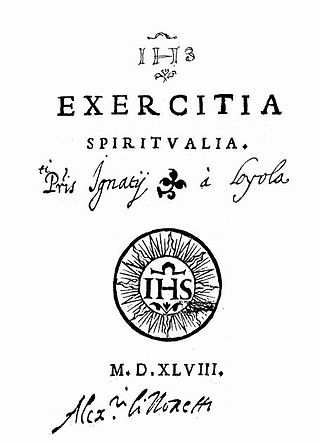
The Spiritual Exercises, composed 1522–1524, are a set of Christian meditations, contemplations, and prayers written by Ignatius of Loyola, a 16th-century Spanish priest, theologian, and founder of the Society of Jesus (Jesuits). Divided into four thematic "weeks" of variable length, they are designed to be carried out over a period of 28 to 30 days. They were composed with the intention of helping participants in religious retreats to discern the will of God in their lives, leading to a personal commitment to follow Jesus whatever the cost. Their underlying theology has been found agreeable to other Christian denominations who make use of them and also for addressing problems facing society in the 21st century.
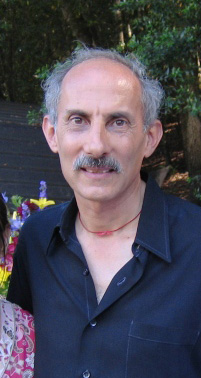
Jack Kornfield is an American writer and teacher in the Vipassana movement in American Theravada Buddhism. He trained as a Buddhist monk in Thailand, Burma and India, first as a student of the Thai forest master Ajahn Chah and Mahasi Sayadaw of Burma. He has taught mindfulness meditation worldwide since 1974. In 1975, he co-founded the Insight Meditation Society in Barre, Massachusetts, with Sharon Salzberg and Joseph Goldstein, and subsequently in 1987, Spirit Rock Meditation Center in Woodacre, California. Kornfield has worked as a peacemaker and activist, organized teacher training, and led international gatherings of Buddhist teachers including the Dalai Lama.
A starets is an elder of an Eastern Orthodox or Eastern Catholic monastery or convent who functions as venerated adviser and teacher. Elders or spiritual fathers are charismatic spiritual leaders whose wisdom stems from God as obtained from ascetic experience. It is believed that through ascetic struggle, prayer and hesychasm, the Holy Spirit bestows special gifts onto the elder including the ability to heal, prophesy, and most importantly, give effective spiritual guidance and direction. Elders are looked upon as being an inspiration to believers and an example of saintly virtue, steadfast faith, and spiritual peace.

Paisius Velichkovsky or Wieliczkowski was an Eastern Orthodox monk and theologian who helped spread staretsdom or the concept of the spiritual elder to the Slavic world. He is a pivotal figure in Orthodox Church history.

In Catholicism, the veneration of the Holy Name of Jesus developed as a separate type of devotion in the early modern period, in parallel to that of the Sacred Heart. The Litany of the Holy Name is a Roman-rite Catholic prayer, probably of the 15th century. The Feast of the Holy Name of Jesus was introduced in 1530.
Discernment of spirits is a term used in Eastern Orthodox, Roman Catholic and Charismatic Christian theology to judge the influence of various spiritual agents on a person's morality. These agents are:
- from within the human soul itself, known as concupiscence
- Divine Grace
- Angels
- Devils

Ignatius Brianchaninov was a bishop and theologian of the Russian Orthodox Church. He stands out as one of the greatest Eastern Orthodox patristic writers of the nineteenth century.

"Kainei" Edward Espé Brown is an American Zen teacher and writer. He is the author of The Tassajara Bread Book, written at the Tassajara Zen Mountain Center, as well as the co-author of The Greens Cookbook, with Deborah Madison.
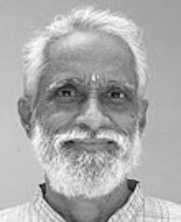
A. G. Mohan is an Indian yoga teacher, author, and co-founder of Svastha Yoga & Ayurveda. Mohan was a longtime disciple of Tirumalai Krishnamacharya (1888-1989), the "father of modern yoga".
Prelest, also known as spiritual delusion, spiritual deception, or spiritual illusion, is an Eastern Orthodox Christian term referring to a false spiritual state of holiness or a spiritual illness of believing oneself less sinful than one is.















